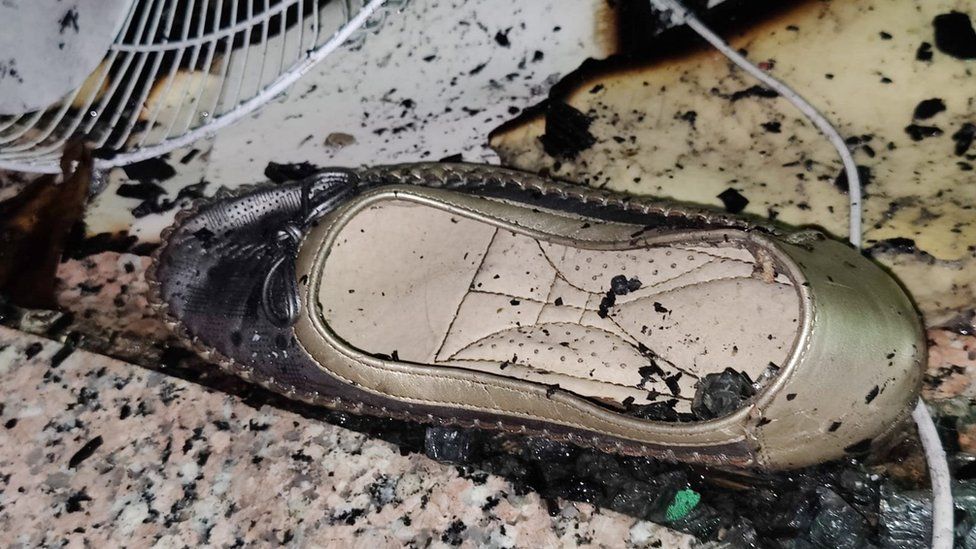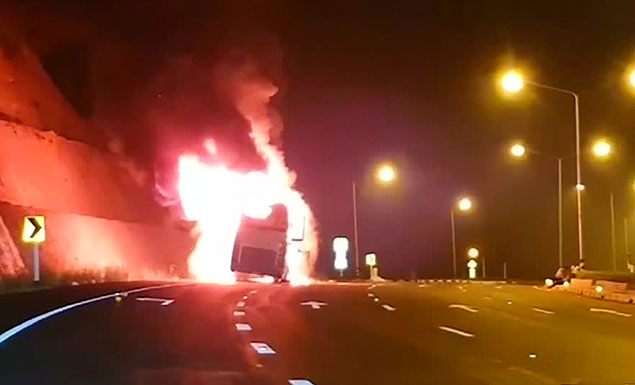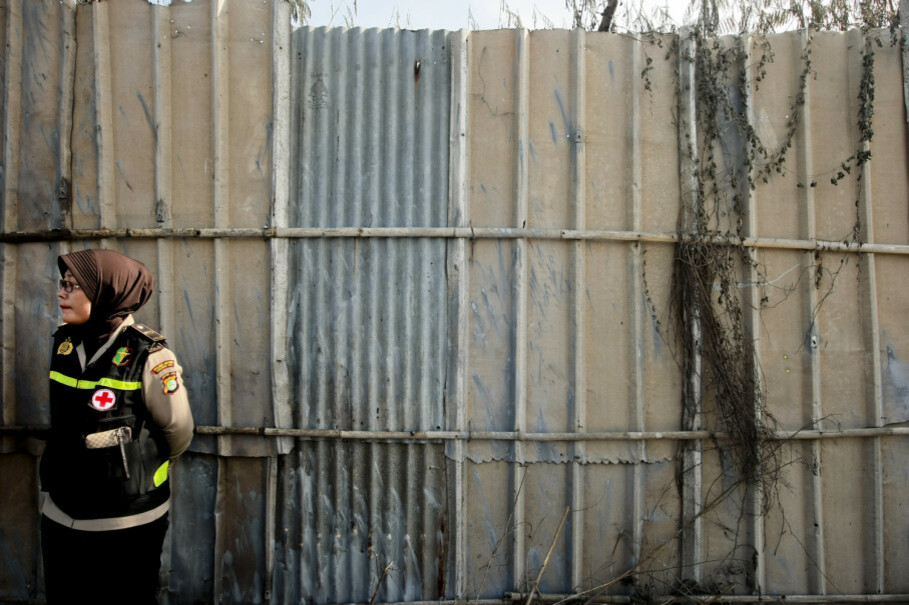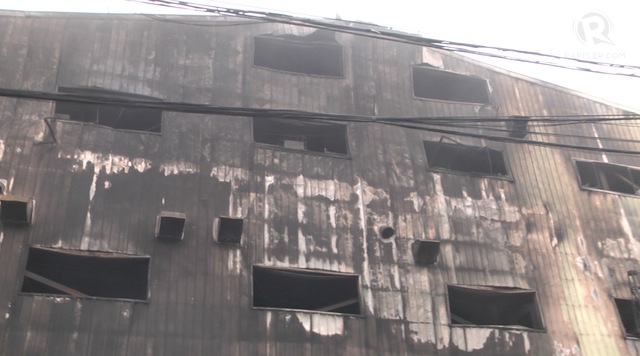
Woman worker’s shoe outside the burned building
On Friday, May 13, a fire broke out in a “commercial building” in the Mundka suburb of New Delhi. As of two days later, at least 27 people were killed, or better murdered. That number is expected to rise. “Women made up the majority of … workers.” Again. The building had a factory. The factory owners have been arrested. The building had two owners. The owners have been arrested. Their arrest will not bring back the 27 people, the majority if not all of whom are women.
The building is stories tall. The building has never passed any fire department inspection. The building had no fire safety equipment, such as fire extinguishers. The building had no fire exit. Most of the people who died, the twenty-seven “charred bodies” that were recovered, died of asphyxiation. The only exit to the building was blocked “by rubbish”. The staircases were packed with cartons. Those inside never had a chance. Women made up the majority of workers.
According Atul Garg, the Delhi Fire Chief, “It seems the entire building was illegal.” Illegal and in plain sight. The area in which the building stands is village land, zoned only for residential and small shops. Commercial enterprises on village lands are prohibited. “However, commercial activity in these areas is rampant.” Four stories high, completely and visibly illegal.
The women manufactured and assembled CCTVs and WiFi routers. They are the latest addition to the roster of women workers sacrificed to the global, national, and local economies. December 11, 2019: “Sunday’s factory fire in New Delhi was a planned massacre of workers: We know”. July 16, 2019: “Saturday’s factory fire in New Delhi was a planned massacre of women workers”. January 22, 2018: “The factory fire in New Delhi was a planned massacre of women workers”. Women made up the majority of workers.
(By Dan Moshenberg)
(Photo Credit: BBC)




